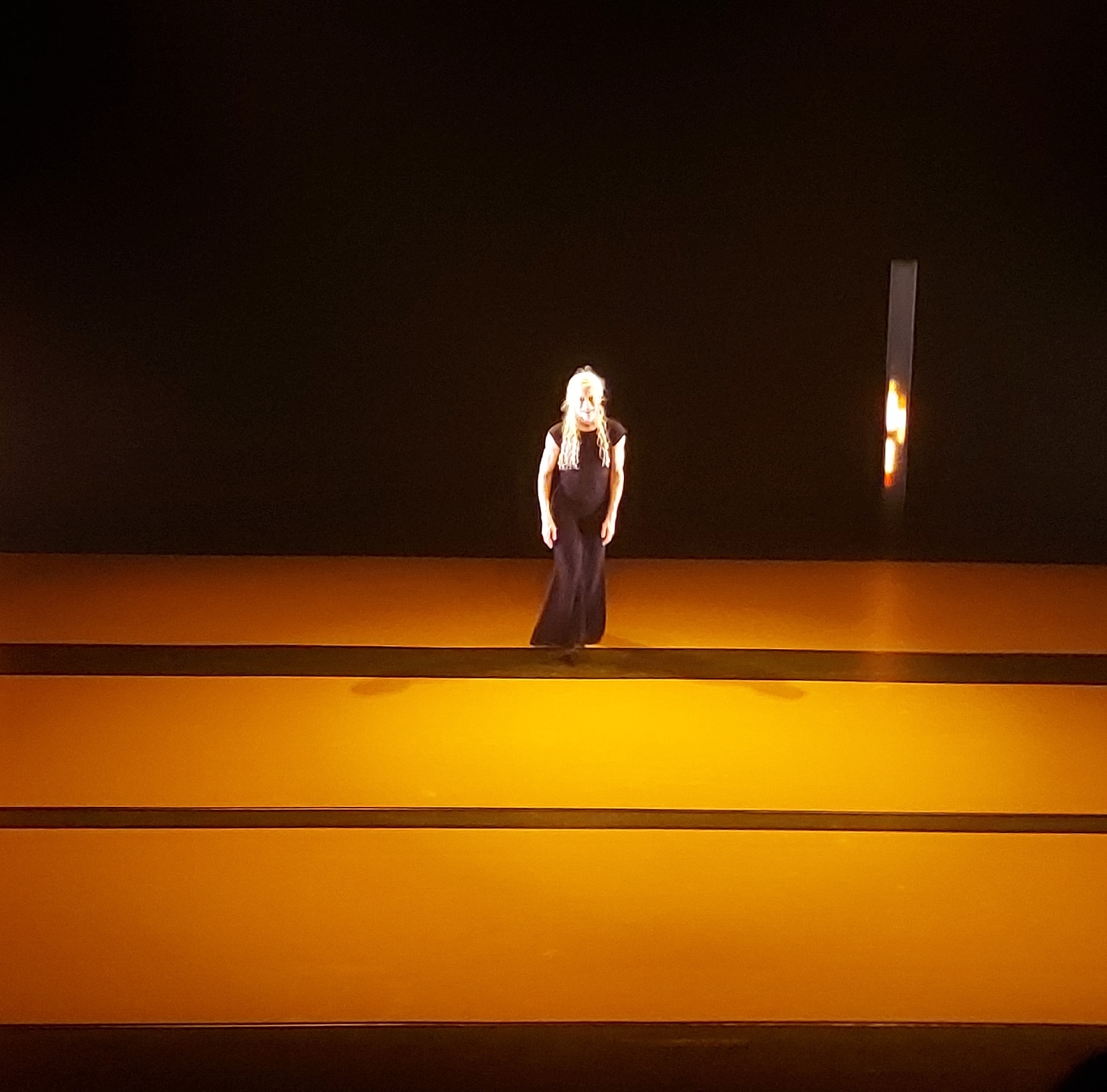註:「觀。聲。陣——參與式劇場在地研究計劃」於2017年中至2019年底舉行。計劃獲藝能發展資助計劃支持,由李海燕、何應豐聯合策劃,盧君亮、賴閃芳、羅家驊聯合執行。以下是2020年向當時稱民政事務局的資助方提交的終期報告。五年後重讀,有感部分觀察仍有當下關聯,故上載網誌,時刻提醒。
「觀。聲。陣——參與式劇場在地研究計劃」終期報告:有可能性的將來,才是真正的「成效」
在計劃完成之際,團隊再次感謝藝能發展基金的支持。「觀。聲。陣」無論在理念或執行方式都與香港慣有的表演藝術項目不盡相同,對於部分人士來說,支持它是「有風險的」。兩年來,雖然某些數字指標未能達至預計水平,但是局方沒有干預計劃進行;以評審員身份來觀察活動的諸位均積極參與,務求對計劃的意義及執行更深入了解。團隊認為,能夠獲得局方對實驗性項目抱持開放態度,甚至親身參與,本身已是成效之一種。
實驗性計劃的價值主要在於揭示可能性,為後續探索引路。團隊在總結「觀。聲。陣」成效時,尤其關注在兩年持續不斷的活動中發現得到有關舞台業界的思考或行為模式(modus
operati)、以及模式與目前業界狀況的可能關係。以下報告,將分為針對研究員及易陣者的兩大部分:
第一部分:研究員
參與「觀。聲。陣」研究的藝術從業員共26人。按計劃設計,策展人「負責籌組藝術家團隊,製造契機,讓跨界別的成員在創作上互相撞擊。」(見申請書)分組按原定構思執行,策展人把研究員分成六組,每組介乎三至八位之間;除了第三及第五組各有兩位舞蹈從業員外,其餘的在同一組別內藝術界別不重複。同組研究員甚至在研究開始前更可能互不認識。
六組研究員面向的六個研究主題,是由策展人與研究員逐一商議後所得;主題指涉一定範圍,但並不具體,目的為預留足夠詮釋空間,容納研究方法以及過程中的變數。策展人主要以討論方式,協助研究員按個人生活經驗及興趣把主題具體化,推展研究進程;本著對探索的尊重,不會否決任何嘗試。以下狀況並非對個別研究方法的評定,而是在六組中都有出現、唯細節以及程度不同的概括性的觀察,策展人認為,從此等觀察所得或可窺見本地文化現狀的一些成因:
一、所有研究員均抱持與他人合作的意願,尤其是習慣以團隊為製作單位的舞台和電影從業員;即使從事視覺藝術、文學、行為藝術等以個人為單位創作的,也不抗拒團隊概念,相信與當代藝術語景中愈來愈流動的媒介邊界有關,從業員對其他媒介的好奇心和開放性大增,參與本計劃也是出於希望超越自身媒介的意欲。
二、在如何利用不同藝術媒介的思考進路來推展研究方面,舞台(特別是香港演藝學院畢業生)與其他界別從業員有明顯分別。由於本計劃不涉及香港一般理解中的「演出」,舞台從業員在沒有明確「製成品」的想像下,比較難掌握如何利用組員的思考進路,成為自己研究的對位法(counterpoint)。
三、研究員之間對問題意識(problematics)的掌握,落差頗大。雖然藝術創作的衝動可以來自畫面、直覺、夢境、聲音,但是要深化衝動,建立與作品受眾溝通的橋樑,需要啟動問題意識,梳理出藝術家的獨特視角。我們追蹤研究員的學習背景、閱讀習慣,以及創作方法,了解到造成落差的大概:香港演藝學院的教育側重技術,思辨訓練不足,假如研究員本身閱讀量不大,容易對語文產生抗拒;而語文和思辨的能力,不單互為表裡,更是互相餵養的共生關係。問題意識薄弱的研究員,超越不了直覺和畫面,難以循序漸進地明確化和深化研究,同組研究員及易陣者亦因為欠缺清晰面向而難以與之協同。
四、「如何做」與「為何做」在研究過程中經常被討論。在接近開放工作室的日子,「如何做」更容易成為焦點。「觀。聲。陣」強調以「行動研究」為方法,縮短「如何」和「為何」的距離——藝術呈現的每個決定,都由有跡可尋的思考支撐;思考的內涵,以實際的身體經驗來填充。承上一點,舞台與其他界別從業員在思考「如何」及「為何」的優次以及縮短兩者距離的能力方面,有明顯分別。誠然,以每組為期四個月的駐場期限,要處理如此浩瀚的問題是困難的。可幸的是,幾乎所有研究員都察覺及認同距離的存在。希望他們在計劃之外仍然繼續有關探索。
五、雖然研究員願意與其他界別合作,但是他們會刻意避免碰撞,很少質疑他人研究方法的設計基礎、遇上認為有問題的方法時,索性避免參與互動。香港是一個忌諱正面對質的社會,在狹窄的表演藝術圈子更甚;但對於在研究場域中未能放開懷抱探索,計劃團隊感到可惜。
第二部分:易陣行動者
受到香港主流的資本主義思維影響,表演藝術界習慣把觀眾看待成目標顧客群,舞台演出以「製成品」方式出售;然而藝術受眾的獨特之處,正正在於他們不是純粹可以用人口學量化的群集。以群集消費品味來設定藝團的「市場策略」的話,觀眾以消費商品的心態購買門票,以「擁有」製成品心態觀賞演出,對藝術抱持「用完即棄」的態度,沒有情感投入。觀眾量一直無法增長的原因之一,正在於藝術忽略了群集和個體之間的感性距離。
響應公開招募參加開放工作室及/或工作坊的人士,在「觀。聲。陣」計劃中的身份是「易陣行動者」:「『陣』是策略性的結構,有其遊戲規則,參與其中可按既有格式穩定前進,但也可能囿於格式無法突破。假如以買賣定勝負是今天的藝術消費陣式,易陣可以如何發生?『易陣行動者』(易陣者)視表演藝術為平等參與的聚合,表演者和觀者各司其職,承擔創作、闡述和接收舞台作品的權力和付出,以行動構築文化想像,重置藝術創作和表達的核心。」(見計劃網站)
我們創立「易陣者」稱謂,非為巧立名目,而是希望公眾察覺到自己不是一般意義上的「觀眾」,同時擺脫對參與式劇場行為模式的前設,鼓勵易陣者以開放態度介入研究,體驗「擁有權」(ownership)、「協商」(negotiation)、「判斷」(judgment)在演與觀之間的流動。
「觀。聲。陣」開放工作室及/或工作坊一般歷時四小時,首三小時是活動內容,最後一小時是由策展人帶領的深度討論。「迷惘」,幾乎是每位易陣者必須經歷的狀況。「我應該做甚麼?有沒有做錯?」他們的迷惘在於失去明確的消費對象之後,應該如何整理自己與場域的關係?依據甚麼來理解自己的角色?由誰來判斷行為的正確性?
類似的思考,正是「觀。聲。陣」計劃中理想的「參與」:用自己的方法製造獨一無二的觀演經驗,而經驗的價值只由個人定奪。抱持這態度的話,即使是在較為傳統的劇場設定(即舞台與觀眾席明顯區分、演出全部由演員完成),藝術受眾也能著眼於作品和自己的關係,而不是自己能否「正確」明白作品和創作者的關係。這裡涉及的是主體與主體之間的交流,而不是主體向客體的單方面灌輸。「參與」不只/不是形式,而是思考在劇場內存在的自己的方法。
有關參與的易陣者人數,見本報告第二部分。數字不能反映的,是如何以計劃理念梳理易陣者的行為訊息。兩年來,只出席一至兩次的與持續出現三次或以上的易陣者,各佔約一半,有很少數是兩年持續參與的。只出席一至兩次的,可能受主題或相關研究員的名氣吸引而來,但是對於要主動尋找參與行為模式一事感到難以適從,更有人直言感到「無聊」、「不明所以」,他們會中途離開或加入,進一步影響到體會參與的深度。這類可描述為「張望型」的易陣者,對香港大部分的舞台表演感到不滿足,參加「觀。聲。陣」活動「看看有甚麼新鮮事」(引用部分易陣者用詞),但是香港的舞台比較單一的形式令他們面對要求高度自主性和主動性的場景時,只敢在外往內張望,不敢跨越自定的「觀眾」門檻,察覺不到自己欠缺通過行動製造意義的慾望和能力。假如香港有更多機會給予從業員進行形式更靈活的舞台製作,以及在建立觀眾對話上更有耐性,調整質與量的衡量的尺度,「張望型」的易陣者可漸次發展成深度觀眾;反之,現有的劇場狀況有可能令他們放棄觀演。
至於持續出現三次或以上的,同樣對現有的舞台表演感到不滿足的觀眾,亦有藝術從業員。這群「辯證型」的易陣者抗拒被動接收,希望與研究員深度交流,借助他們的研究來發現自己,以自己的方法和步伐,經驗他人設計的框架。辯證型易陣者的重複參與,有因為對個別研究員的方法有共鳴,亦有不怎麼在意是甚麼主題或研究方法,而是在要求高度自主性和主動性的場景找到發現自己的樂趣。這個群體對於推進任何藝術形式的發展都是非常重要的。創作者可以通過他們的開放性,作出不同意念上和形式上的嘗試,坦誠地展示創作變得完熟前的瑕疵,這種誠意和努力對藝術受眾來說,其重要性不下於創作的「完成品」。
在「觀。聲。陣」運作了一年之後,團隊發現易陣者們中不少對香港的舞台(甚至整體藝術上)的發展有獨到的見解,可是現行的劇場執行模式沒有讓他們的聲音獲得聆聽:「演後藝人談」往往只有十多分鐘,表演者在剛演出完身心疲累時難以應付深度對話;問卷調查更是重統計數據而非有機交流。有見及此,我們調動了資源,在網媒文化版購買版位,刊登易陣者的詳盡見解。此舉突破了香港劇場活動的宣傳策略,不以創作者或作品為訊息核心內容,尊重觀眾群體中的每個獨立個體,邀請每位持份者為作品製造意義。


